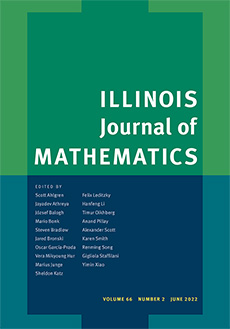Abstract
We study local systems arising from flat line bundles over topologically trivial families $U \rightarrow S$ of hyperplane complements in $\mathbb{P}^{n}$. Imposing some genericity condition on the monodromy, one knows that fiberwise the cohomology of the local system is concentrated in the middle dimension and is computed by the Aomoto complex, a subcomplex of global differential forms on a good compactification $\pi:X \rightarrow S$ with logarithmic poles along $D' = X \backslash U$.
The families $\mathcal{A}'$ considered are obtained by fixing a configuration $\mathcal{A}$ of hyperplanes and moving one additional hyperplane. The line bundle is the structure sheaf, endowed with the connection $d_{\mathrm{rel}} + \omega$, for a logarithmic relative differential form $\omega$. In this situation we construct the Gauß-Manin connection $\nabla$ on $R^{n}\pi_{\ast}(\Omega_{X/S}^{\bullet}(\log \mathcal{D}')$, $d^{\mathrm{rel}}$ $+ \omega)$. We show that these sheaves are free. Using the combinatorics of $\mathcal{A}'$ we give a basis for these sheaves and an algorithm to express the connection $\nabla$ in this basis. The corresponding matrix depends too much on the combinatorics of the arrangement to be given in a closed form, but we illustrate the method with some examples.
These results can be seen as a generalization of the hypergeometric functions.
Citation
Herbert Kanarek. "Gauß-Manin Connection arising from arrangements of hyperplanes." Illinois J. Math. 44 (4) 741 - 766, Winter 2000. https://doi.org/10.1215/ijm/1255984690
Information





